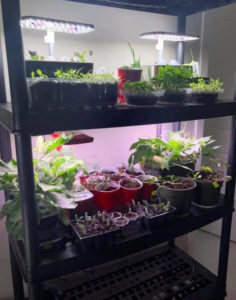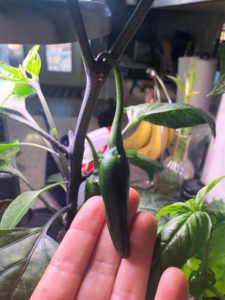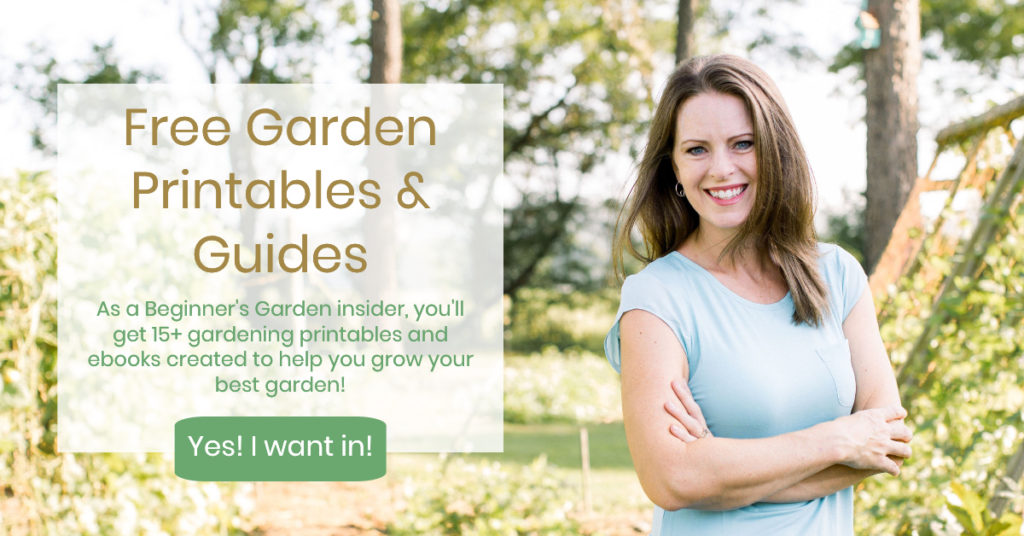How to Grow Food Indoors in the Winter
After the garden season has closed, do you ever wish you could grow food indoors? Maybe it seems like a dream — what other people do. But you? You think your winter food will come solely from what you’ve preserved and what you can buy at the grocery store.
But it doesn’t have to be that way. Even if you have a small indoor space, you can add fresh vegetables and herbs to your table, even in the dead of winter.
In this episode of the Beginner’s Garden Podcast and in the article below, Ashley from Dirty Paws Homestead shares her tips to get started growing food indoors. Before Ashley and her husband moved to their current homestead in central Alberta, Canada, they made their home in a 1300-square foot townhouse. In that townhouse, Ashley learned how to grow some of her own vegetables and herbs in a tiny closet throughout the long, Canadian winter.
If Ashley can grow food indoors in her small townhouse, anyone can! Click below to listen to our conversation or continue reading.
*links below contain affiliate links
Getting Started Growing Food Indoors
One day Ashley stumbled upon a kit for growing microgreens and she was hooked. From there she started small-space hydroponics and began exploring other indoor growing techniques.

Growing Microgreens Indoors
There are several reasons why microgreens served as the “gateway” for Ashley’s indoor gardening journey. Microgreens grow quickly — as fast as 7-10 days — and the light from a window is enough for them (no grow lights necessary!).
When you get started in your indoor gardening with microgreens, you could be eating fresh greens in only a week!
First, find a shallow container. Even a leftover clamshell container works great. Add potting soil and scatter microgreen seeds on top of the soil, lightly raking them into the surface with your fingers. Keep them watered and watch them grow!
Microgreens are ready to harvest when the “true leaves” appear. Snip at the soil surface and enjoy! (More details on growing microgreens here and here.)
Starter Hydroponic Systems for Indoor Food Growing
Even in a small space, Ashley reserves space to grow inside. She has several shelves with grow lights as well as a couple of hydroponic systems. The main difference with hydroponics is that the plants are grown in water instead of soil.

Hydroponic growing can seem intimidating for many gardeners, especially those more familiar with growing in the soil. That’s why Ashley highly recommends the Aerogarden all-in-one options. They come equipped with light and seed pods, along with reminders to when to water and fertilize.
Aerogarden systems can range from a basic herb kit to a more elaborate system. You can buy seed pods for lettuce, tomatoes, and more. It’s kind of like the KeurigⓇ of indoor growing.
Plants that do well in a hydroponic system:
- Leafy herbs like basil, mint, dill, and parsley.
- Cherry tomatoes
- Small peppers
- Green beans
- Eggplants
- Lettuce
- Kale

Indoor Growing Herbs and Vegetables in Soil
If you want to skip the hydroponics systems, you may wonder what you can grow indoors in the soil, under traditional grow lights.
Ashley prefers growing woody herbs in the soil, like rosemary. This would be a great option for gardeners in cooler climates when perennials like rosemary and sage might not survive the winter.
Other options include quick-growing leafy greens like lettuce and arugula.
The key to growing these plants without a timed system (like the Aerogarden) is ensuring the plants get the proper amount of light. Aim for mimicking natural day length when those plants would otherwise thrive outside, but in general, these plants will thrive with 12-16 hours of sunlight.

Indoor gardening challenges
Growing indoors, while not impossible, does pose challenges not common in an outdoor garden. In a hydroponics system, you need to maintain the nutrients and pH in your water. This can be intimidating, even though it doesn’t need to be, and with an Aerogarden setup, following the instructions will take the guesswork out of these variables.
Light is another challenge because without a grow light, sunlight from the window is typically not sufficient for anything more than microgreens. Many gardeners can grow herbs like basil on a sunny window sill, but this does depend on your latitude. Northern gardeners like Ashley, with only six hours of daylight during the shortest days of winter, will have trouble growing on a window sill, but those at a lower latitude might find more success.

Finally, the lack of pollinators indoors can cause some unique challenges. Even though tomatoes are self-pollinating, for example, they do need an external force to shake the flowers for proper pollination. You can add a fan, shake the flowers yourself, or use a manual pollinator like Ashley suggests.
Getting Started with Indoor Growing
If you are willing to spend a little money, an Aerogarden is the place to start. When you get your system, everything that you need is included. But if you don’t want to purchase the system, there are ways to DIY your setup. You just have to be willing to do some research and put in additional effort to get it up and running.
If you want to start with microgreens, many seed companies sell them. (Here’s one great source for a selection of microgreens.) Then find a small container, like a clamshell or yogurt container, with some holes in the bottom. Place a tray underneath to collect excess water. You can use potting mix or seed starting mix and the seeds will grow as long as they stay moist. (Or, just purchase a microgreen starter kit.)
With the exception of microgreens (which can grow using only a window sill), the most important thing for indoor growing is your lighting. LED lights don’t get hot, are energy-efficient, and work well. But standard T5 fluorescent lamps like I’ve come to use for seed starting can also double as indoor grow lighting in the winter.
The biggest suggestion Ashley and I can make is to just start somewhere! Whether it’s microgreens or a full-on hydroponic setup, try growing a few fresh herbs or leafy greens over the winter and see what you can grow. Hopefully, in the middle of winter, these growing herbs and veggies will bring enjoyment and nutrition until you can start gardening again in the spring.
Seed Starting Quick Reference Guide
Which seeds should you start indoors? Which should you wait to plant directly in the garden? When? And in what soil temperatures do certain seeds germinate better? Grab this one-page quick reference guide to get your seeds sprouting and your plants growing strong!
Plus, I'll send you my "In the Garden E-mail" on Fridays, periodic updates on garden resources relevant to you, and get access to my entire bank of free garden downloads!
You are also agreeing to our privacy policy.




I listened to your podcast on this topic and heard you’re interested in trying microgreens this winter. Check out Homemicrogreens.com as it’s based on those starting to grow microgreens at home. Keep up the good work with the podcast!
Thank you for sharing!